After the #SauvBlancDay introductions the real fun began: 12 wines blind-tasted in pairs, one Loire, one Kiwi under the themes Great Value, Award-Winning, Pioneer, Pure Terroir, Innovation and Off the Beaten Track.
Everything has its ’15 minutes of fame’
We’re not short of an Awareness Day or two. Every day now there is a type of food, illness, grape, or another generic body representing some hidden corner of our human condition that we must all get behind and celebrate, or certainly be aware of.
Presumably it was at the point when Shrove Tuesday changed forever into Pancake Day that this modern phenomenon took place. Now every day is reserved for a national or international celebration of some kind or other.
Did you know, for example, that April 23rd is National Asparagus Day? You do now. A couple of days later it is National Richter Scale Day? Me neither. Or that May the 4th is Ankylosing Spondylitis Day? That’s easy for you to say. Hopefully you’ll be getting the message that the day before, May the 3rd is International Sauvignon Blanc Day – and we’re assuming that the two celebrations aren’t linked. “Phew my head, I think I’ve got a bit of Ankylosing Spondylitis on account of that cheap Savvy Blanc I was drinking last night.”
I know it’s not funny to mock those afflicted with this form of arthritis – but by having an Awareness Day set aside it’s already getting onto your radar isn’t it. Did you even know it existed?
Which brings us back to #SauvBlancDay, as it’s being called this year, an international celebration of Sauvignon Blanc wines, which is a promotional hook for both on-trade and off-trade… and an excuse for punters to drink rather a lot of it.
Why else have it on a Friday? I mean which bright spark put Malbec Awareness Day on a Wednesday? Good luck getting into work after that one fellas.
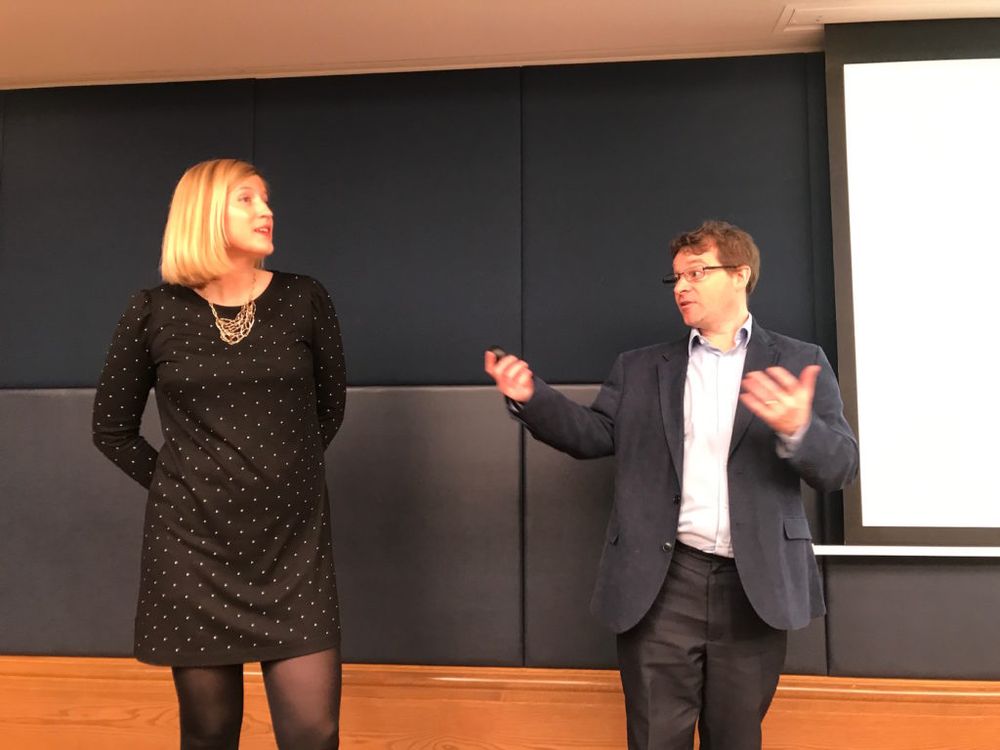
Victoria Kukla from Sopexa and Chris Stroud, New Zealand Winegrowers launching #SauvBlancDay at 67 Pall Mall, London
A multi-faceted view of Sauvignon Blanc
One hopes that most people have a rough idea about Sauvignon Blanc wines, particularly since New Zealand Savvy Blanc boomed out of all proportion in the past 20 years, but maybe not everyone is familiar with its numerous styles nor its Old World roots in the Loire.
The drinks industry thrives on points of difference and so it was novel and quite re-assuring to see the world’s top two Sauvignon Blanc producing countries – France and New Zealand collaborate and celebrate their common ground and their differences, by launching #SauvBlancDay at London’s 67 Pall Mall with Rebecca Gibb MW and Jamie Goode presenting to an invited audience that included Jancis Robinson MW and Steven Spurrier amongst other notables.
Gibb and Goode did their double-handed intro – full of fascinating facts and figures – before the assembled throng blind-tasted 12 Sauvignon Blanc wines in six pairs, one from the Loire and one from New Zealand.
This was no Judgment of Sancerre, but rather a revealing, non-competitive update on the latest styles and under-the-radar producers that are working with the grape.
Some titbits about the grape
Rabelais was the first person we know to write about Sauvignon Blanc, mentioning that it was exceedingly good at relieving constipation. “Which is not going to be used as a tagline anytime soon,” quipped Gibb.
Since those heady days of the mid Sixteenth Century Sauvignon Blanc has grown to an enormous 123,000 hectares of vines, of which France is the biggest grower with 30,000 (the Loire accounting for a third of that). Given that New Zealand gave France a 450 years headstart, it has caught up extremely well with 23,000 hectares under vine.
Chile and South Africa are large producers of Sauvignon Blanc, of course, and it has some champions in unexpected corners of the world – especially given it is a cold climate grape; it is the most planted white grape in Israel, for example, there are 500 hectares in India and 90 hectares in Cyprus.
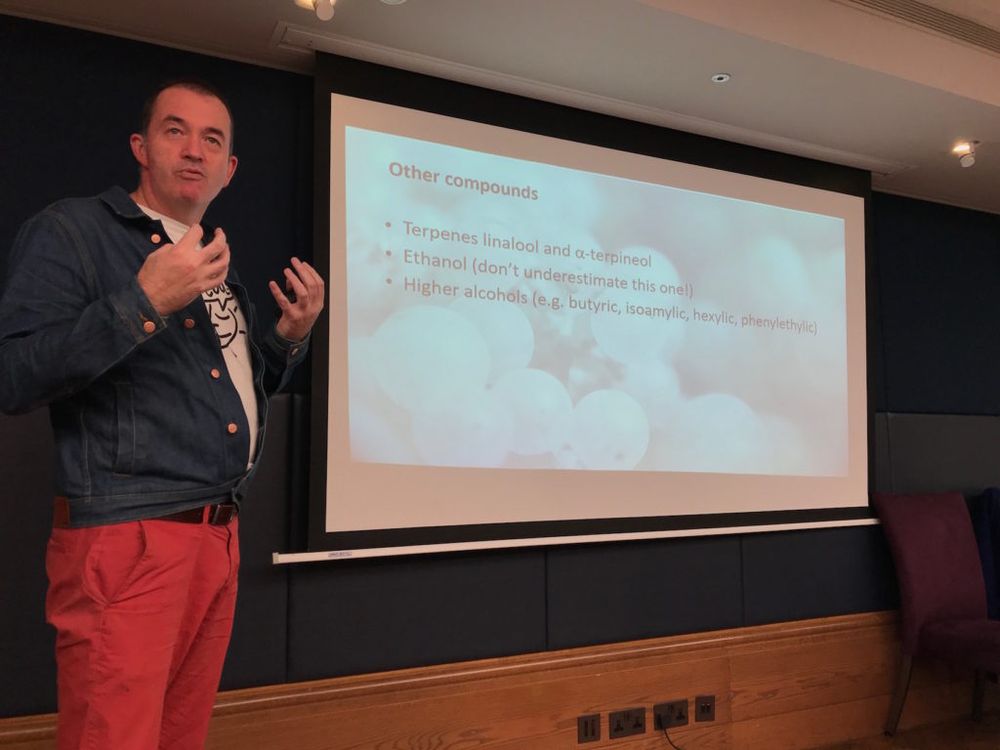
“Phwoar! Get a load of those terpenes” Jamie Goode, 67 Pall Mall, April, 2019
The first planting of the grape in New Zealand was as recent as 1968, the first Marlborough-produced Savvy Blanc was 11 years later, but it wasn’t until 2002 that it overtook Chardonnay as New Zealand’s most popular white variety which had recently deposed Müller-Thurgau as the most popular white. Although Marlborough has the same latitude as Rome, the maritime influence ensures that the climate defies its position. The 40% higher UV than the latitude suggests, the North Westerly winds in summer and the free draining soils means that, although Marlborough and the Loire share roughly the same annual rainfall, irrigation is essential in Marlborough.
Goode then went some way to try and explain what has made Marlborough Sauvignon Blanc so successful. He likened the grape to moss grown in a laboratory as a ‘model system’ and a way of analysing the role and influence soil plays in winemaking. We learned about polyfunctional thiols, methoxypyrazines, how machine-picking leads to ten times the level of thiols in the grapes compared to hand-picking and also the role of terpenes. “There’s just something about the place,” Goode concluded on why Marlborough? If you want to learn more about this then click here.
The blind-tasting
We then blind-tasted the wines, which we were informed afterwards, were in themed pairs: Great Value, Award-Winning, Pioneer, Pure Terroir, Innovation and Off the Beaten Track.

It was a fascinating exercise and was meant to turn a spotlight onto specific producers, regions and styles of winemaking, rather than pit one against the other, although we were all keeping scores of course.
The ‘Great Value’ wines were Villa Maria Private Bin, 2018 and Patricia and Bruno Denis Domaine de la Renaudie Sauvignon 2018 retailing for £12 and £12.50 respectively. The former was big, mouth-filling with unattractive sweaty notes, the latter far crisper and cleaner, more restrained and ‘composed’. I suspect that the Villa Maria outsells the Touraine wine 100-1, however.
The ‘Award Winning’ wines were Cause & Effect Barrique Fermented 2017 which was like chewing a piece of 2X4 and prompted Jancis Robinson to ask “Why would anyone want to make a wine like this?” and to then ask Jamie Goode was the wine as he remembered it when the IWC gave it an award. “No it isn’t,” he replied. The Domaine Benjamin Delobel Cuvee Exponentielle 2017 (currently unavailable in the UK) was from a winemaker who interestingly had spent seven months in New Zealand and was using barrels that were steamed and not toasted. The wine was delicious, has been lauded by French critics and really needs an importer here.
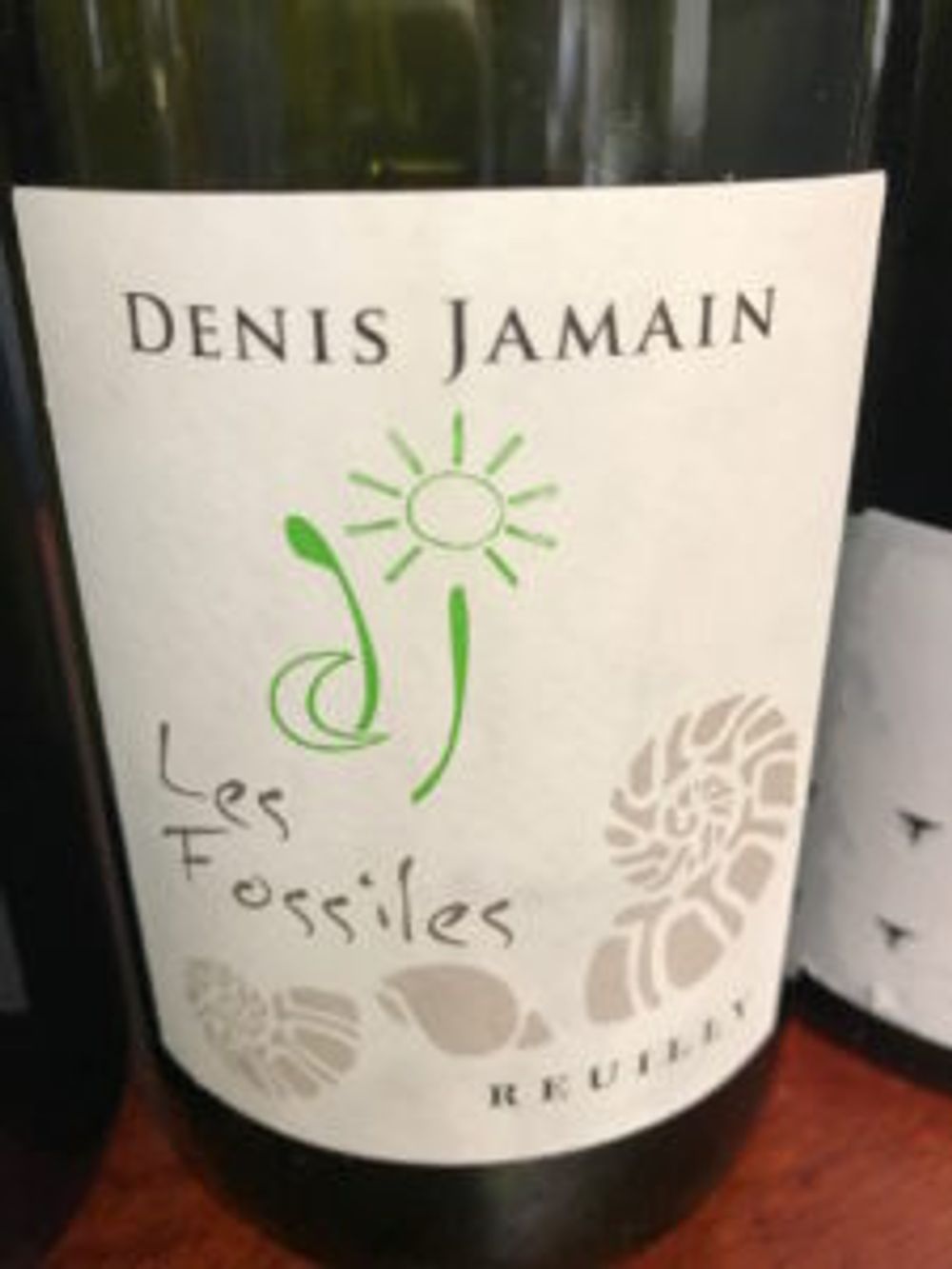
Good to see the excellent wines of Denis Jamain given its turn in the sun in the ‘Pioneer’ pairing. Jamain has been keeping the lesser known Central-Loire appellation of Reuilly on the map almost single-handedly, making terroir-expressive, biodynamic wines such as Les Fossiles 2018 which was elegance and grapefruit pith in equal measure. The pioneer wine from New Zealand was Brancott Estate, Chosen Rows 2010 which had energy and concentration, layers of flavour and a terrific, firm acidity underpinning the ripe fruit.
The fourth pair showed off the influence of ‘Pure Terroir’, being two Sauvignon Blancs made by the same family in Sancerre and in Marlborough, using identical viticultural methods except for the soil the grapes are grown in. Famille Bourgeois is the owner and the wines are Clos Henri Sauvignon 2016 from Marlborough and Henri Bourgeois Cote des Monts Damnés 2017. As when I tasted this pair of wines in Chavignol late last year, I felt the Sancerre just pipped the Kiwi wine to the post but it is a third more expensive, that said both are superbly-made wines – fine wines at a very reasonable price (£20 and £26.50 respectively).
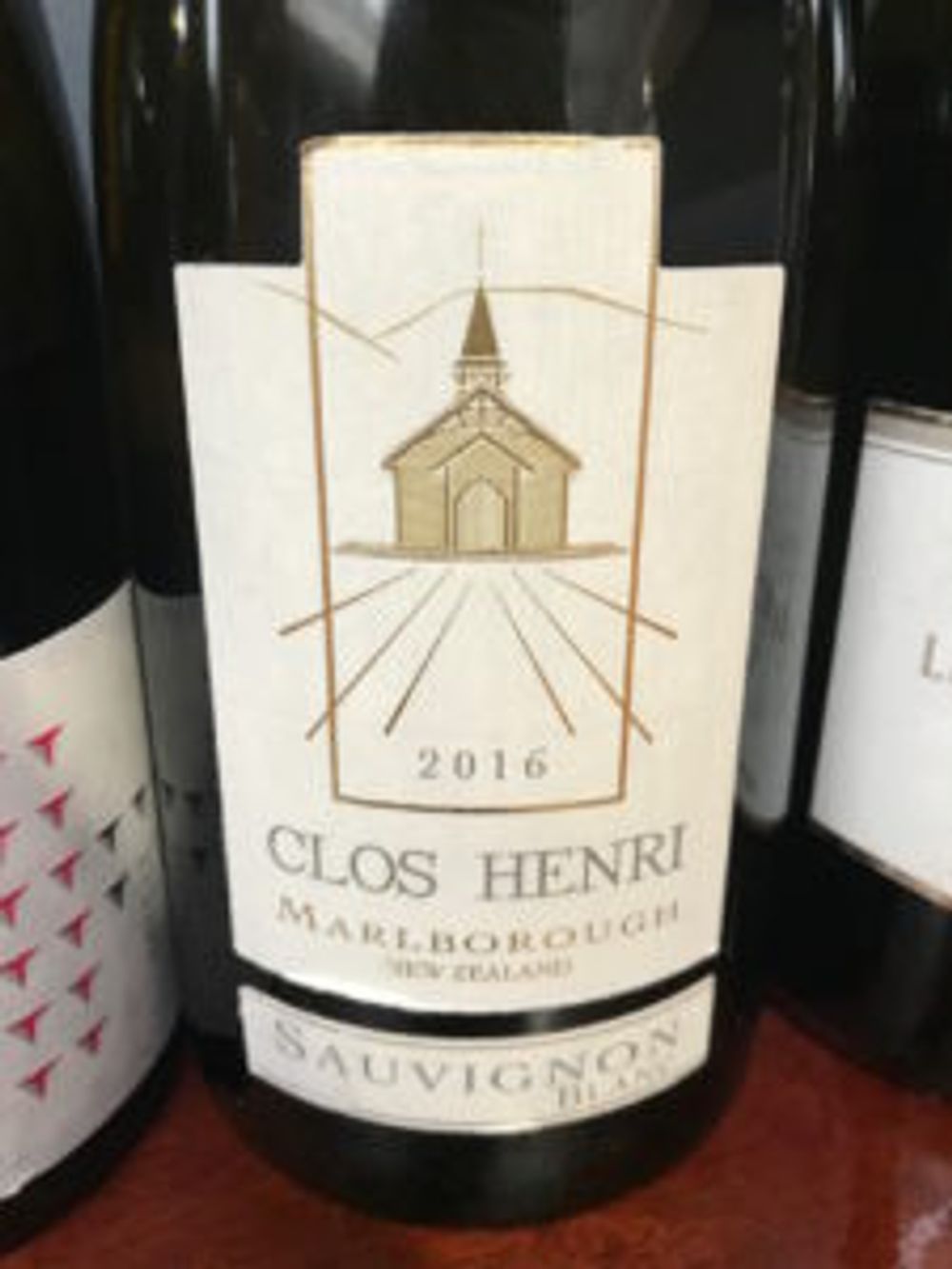
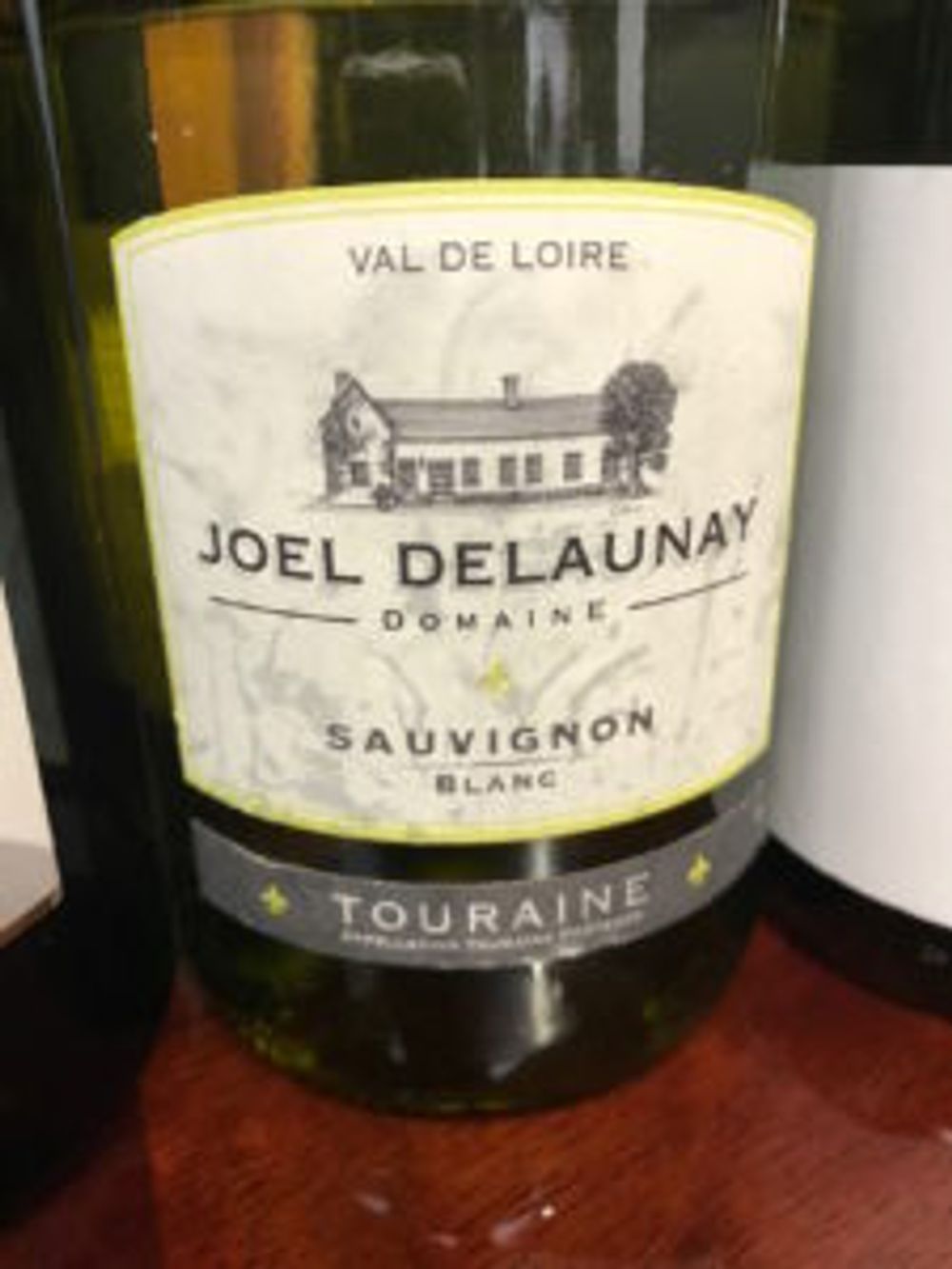
The quality of the Touraine Sauvignon Blancs was evident but bizarrely four of the six wines chosen were from the Touraine, with none from Pouilly-Fumé
The fifth pair of wines showed off ‘Innovation’ in different ways. The Domaine Joel Delaunay Sauvignon Blanc 2018 was fascinating from being in screw cap and naming the varietal on the label – both unusual for France. Delauney went from producing no screw caps to this closure right across his range with 80-90% now sold in export. Other French producers take note! The unmistakeable nose of Kevin Judd’s Greywacke Wild Sauvignon 2016 quite rightly was given credit. Still a bit too young and gun flinty for me, this needs more time in the bottle but it achieves its individuality so well.
And ‘Off the Beaten Track’ had two wines from unexpected places: Te Mata Estate’s Cape Crest 2018 was from Hawke’s Bay to prove that Savvy Blanc doesn’t just come from Marlborough, and Domaine du Pré Baron’s Vielles Vignes 2017 was from one of the two new appellations in Touraine that, through lower yields and time on lees, is targeting the premium market, in much the same way as the more recent appellations in Muscadet have been doing further downstream in the Loire.
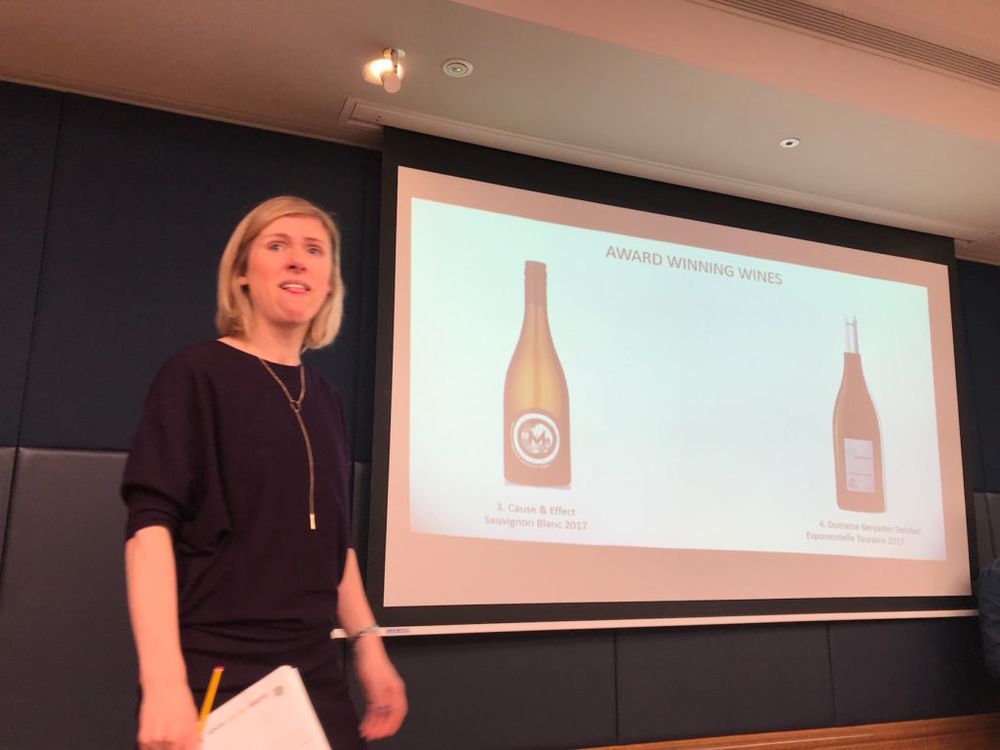
“Spurrier see me after class!” Rebecca Gibb MW giving it the full head teach
This last pairing was most notable on the day for, when Steven Spurrier got the Te Mata correct, Rebecca Gibb piped up with “Well you’ve learnt something in your time!” which brought proceedings to an amiable conclusion.
So we’ve had New Zealand getting into bed with France, who else is going to take up the gauntlet of joint grape variety days? We could have Wines of Argentina and Cahors getting behind Malbec Day for example. Come on guys!
So, in the meantime, once we clear away the bunting from Sauvignon Blanc Day it’s time to get ready for next week’s focus….. happy Donkey Week everybody.
Sauvignon Blanc Day takes place on May 3rd.































